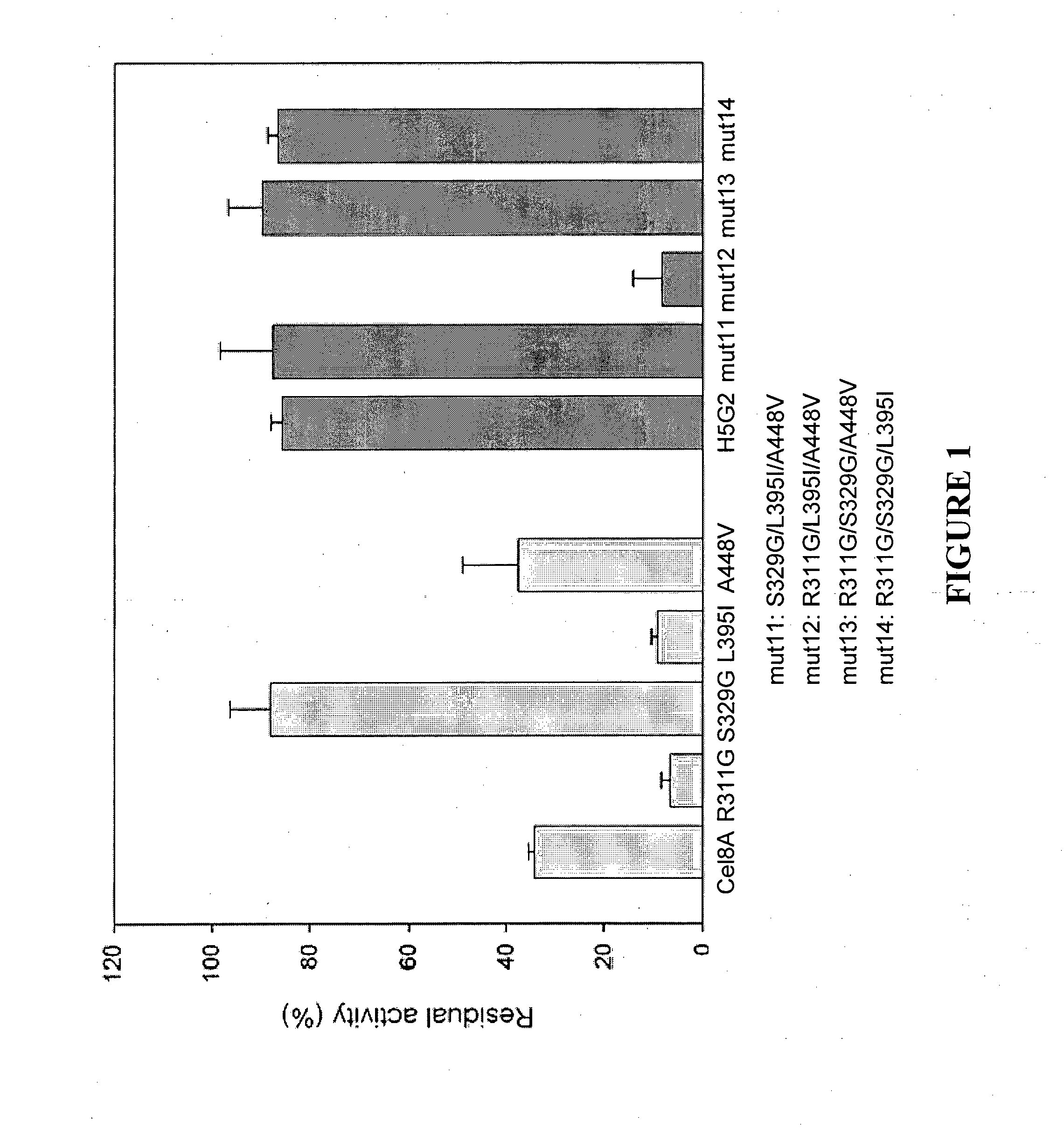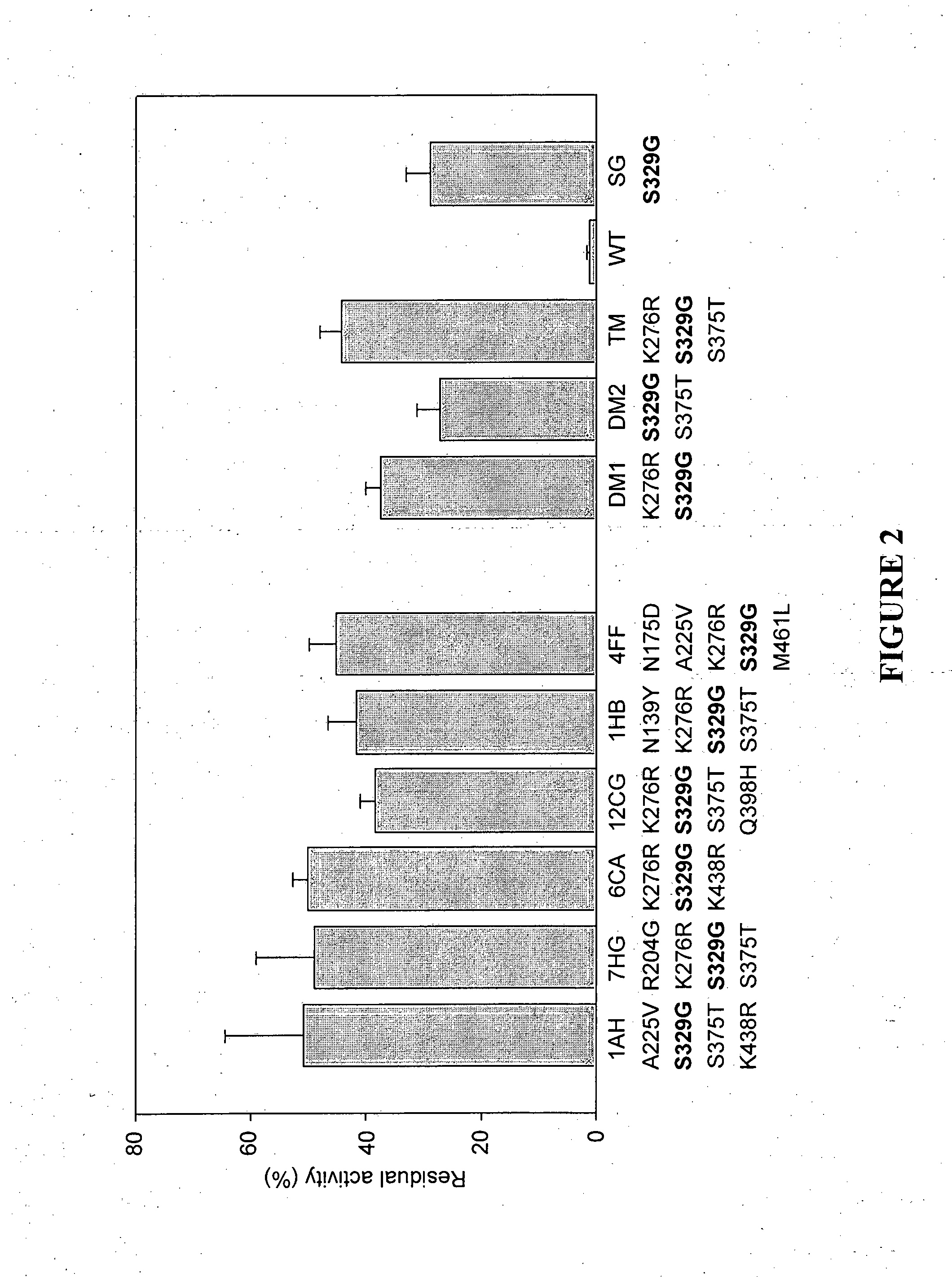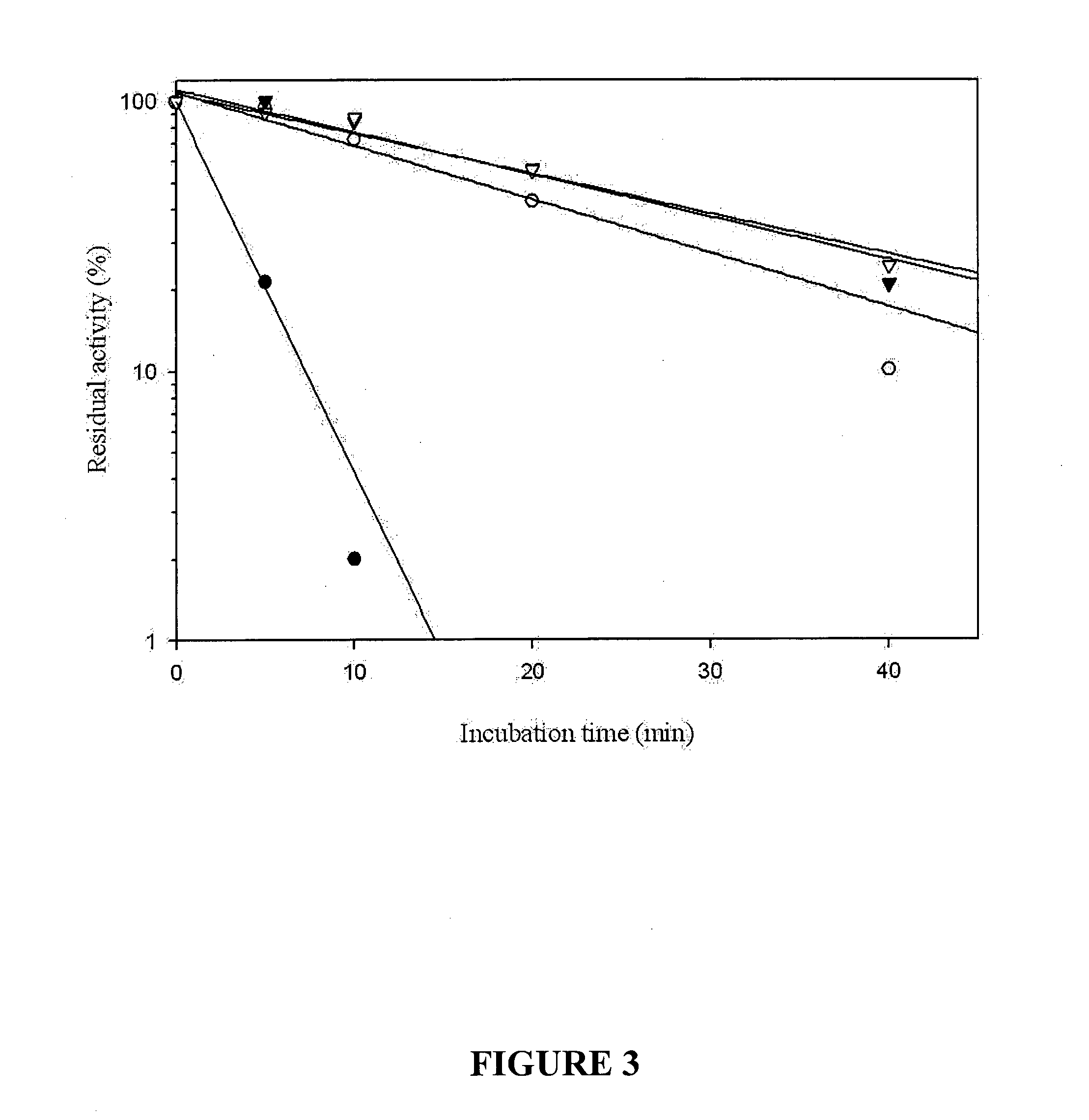Modified cellulases with enhanced thermostability
a cellulase and enhanced technology, applied in the field ofvariant family8 cellulases, can solve the problems of increasing the cost of biofuel production, not having a unique paradigm of thermostable structure, and many techno-economic challenges to overcome, so as to improve the thermostability of enzymes, enhance thermostability, and enhance thermostability
- Summary
- Abstract
- Description
- Claims
- Application Information
AI Technical Summary
Benefits of technology
Problems solved by technology
Method used
Image
Examples
example 1
Directed Evolution Construction of Mutant Cel8A Libraries and Screening
Methods
[0157]Plasmids, strains and growth conditions: Cel8A from Clostridium thermocellum ATCC 27405 was cloned without the signal peptide into pET28a (Novagen, Madison, Wis.) with a C-terminal His tag. The amino acid sequence and DNA sequence of the cloned Cel8A are set forth in SEQ ID NOs: 3 and 4, respectively. E. coli DH5α was used for propagation of plasmids. E. coli BL21 (DE3) was used for high level expression of the recombinant endoglucanase, and was cultivated at 37° C. in Luria-Bertani (LB) medium containing 50 μg / ml kanamycin.
[0158]Random mutagenesis and construction of libraries: A library of cel8A mutants was generated by error-prone PCR using a GeneMorph II Random Mutagenesis Kit (Stratagene, La Jolla, Calif.). pET28cel8A plasmid was used as a template and T7 promoter primer and T7 terminator primer were used for amplification. Reaction mixtures contained 8 ng of pETcel8A. Thermal cycling parameters...
example 2
A Single Amino-Acid Substitution in Cel8A Confers Enhanced Thermostability
Methods
[0162]Site-directed and saturation mutagenesis: Single point mutations were generated in Cel8A (R311G, S329G, L395I, A448V) and in H5G2 (G311R, G329S, I395L and V448A) using QuickChange site-directed mutagenesis kit (Stratagene). To verify that only the designated mutations were inserted by the Pfu Turbo DNA polymerase, the full Cel8A gene was sequenced.
[0163]A gene library encoding all possible amino acids at position S329 of Cel8A was constructed by replacing the target codon with NNS (where N is A, G, C, or T and S is G or C). Two degenerate primers: 5′-CAAGGTTCAAAAATTNNSAACAATCACAACG-3′ (SEQ ID NO: 27) and 5′-CGTTGTGATTGTTSNNAATTTTTGAACCTTG-3′ (SEQ ID NO: 28) (boldface letters indicate the degenerate nucleotides), were designed to randomize position S329 in the nucleotide sequence.
Results
[0164]Four amino acid substitutions (R311G, S329G, L395I, A448V) were mapped to the H5G2 clone. In order to deter...
example 3
Optimization of the Cel8A Mutant by Combination of Mutations
Methods
[0166]In vitro DNA recombination: The four mutants that demonstrated a significant increase in thermostability were individually amplified, mixed, and digested with DNase I (Sigma). The resulting 50-200 by fragments were assembled by PCR as described previously (Abecassis et al., Nucleic Acids Res 2000, 28, E88). The resulting library was cloned into the pET28 vector using the NcoI and XhoI restriction sites.
Results
[0167]The four clones that showed increased thermostability were shuffled using in-vitro recombination to produce an assembly of different combinations of mutations. The assembled PCR fragments were ligated into pET28a and transformed into E. coli cells. Approximately 1000 colonies were isolated. At this stage, initial CMC plate assay was not required, as over 95% of the colonies were positive for activity at 60° C. The clones were subjected to heat treatment of 15 min at an increased temperature (87° C.)....
PUM
| Property | Measurement | Unit |
|---|---|---|
| Tm | aaaaa | aaaaa |
| Tm | aaaaa | aaaaa |
| Tm | aaaaa | aaaaa |
Abstract
Description
Claims
Application Information
 Login to View More
Login to View More - R&D
- Intellectual Property
- Life Sciences
- Materials
- Tech Scout
- Unparalleled Data Quality
- Higher Quality Content
- 60% Fewer Hallucinations
Browse by: Latest US Patents, China's latest patents, Technical Efficacy Thesaurus, Application Domain, Technology Topic, Popular Technical Reports.
© 2025 PatSnap. All rights reserved.Legal|Privacy policy|Modern Slavery Act Transparency Statement|Sitemap|About US| Contact US: help@patsnap.com



